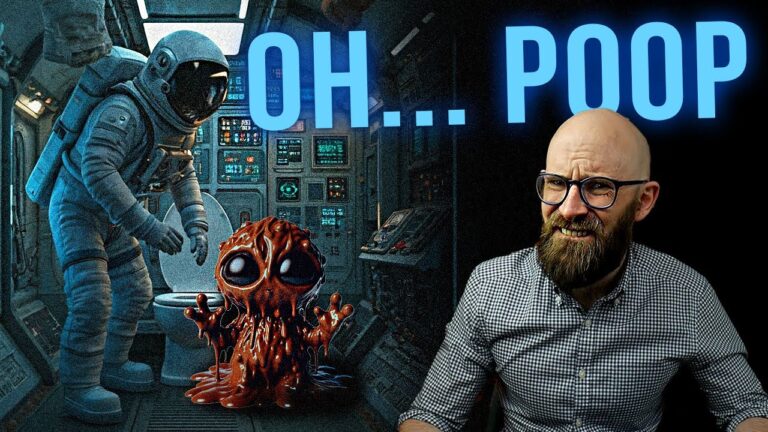“Gravity-Defying Dilemmas: The Ingenious Solutions Astronauts Use to Conquer the Ultimate Space Challenge!”
Meanwhile, the first American space toilet was flown aboard the Skylab space station, which hosted three crews between May 1973 and February 1974. Like the Soyuz facilities, the Skylab toilet – designed by the Fairchild Republic Corporation – used a fan to suck faeces into a plastic bag. The astronauts then used an electric heater and vacuum from outside to dry the excrement, preventing it from fermenting and fouling the space station air. A separate suction hose was used to collect urine. Adding to the sanitary arrangements, Skylab was unique in being the first and last spacecraft in history to feature a microgravity shower. This was enclosed in a telescoping cylindrical curtain and featured foot restraints, a water sprayer nozzle on a flexible hose, and a vacuum system for carrying away wastewater. Astronauts were provided with 420 terrycloth towels, colour-coded to each astronaut. Today, astronauts aboard the ISS keep themselves clean using wet wipes, no-rinse shampoo, and similar products.
For the Space Transport System or STS program – better known as the Space Shuttle – NASA developed a new, more sophisticated space toilet known as the Waste Collection System or WCS. Like earlier systems, the WCS used a vacuum hose to collect urine, though it featured two different detachable heads for male and female astronauts. The male head was funnel-shaped, while the female head was elliptical, with small holes around the rim to allow airflow and prevent excessive suction. The collected urine was then jettisoned overboard. For #2, the WCS featured a special seat with foot stirrups, handholds, a seatbelt, and roller-coaster-esque thigh restraints to hold the astronaut in place. Early versions of the design featured a rapidly-spinning “slinger/shredder” mechanism to break up the waste and direct it onto the walls of the collection tank; however, astronauts understandably objected to having what amounted to a giant garbage disposal so close to their private parts, so the design was changed to use a suction fan as in earlier space toilets. This fan distributed the waste onto the walls of a cylindrical collection tank; after they were finished their business, astronauts would open a valve to expose the tank to the vacuum of space, flash-freeze drying the contents and preventing odours from forming. Toilet paper, wipes, and other hygiene products were placed in sealed plastic bags and disposed of in a separate compartment.











